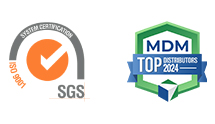Working in hot conditions can expose employees to significant health hazards. Heat stress, a serious condition that arises when the body fails to regulate its internal temperature, can lead to heat-related illnesses such as heat stroke and heat exhaustion. It’s therefore critical to monitor heat stress in work environments to safeguard the health and safety of your workforce.
Understanding what contributes to heat stress, its potential effects, and how to effectively monitor it is crucial. By keeping tabs on heat stress levels, businesses can identify potential risks and take proactive steps to protect their employees. This can involve ensuring proper ventilation, hydration, breaks, and suitable personal protective equipment.
Investing in the right heat stress monitoring equipment is key. It should be reliable, accurate, and user-friendly. By educating workers regarding heat stress safety, companies can raise awareness and share the importance of recognizing and mitigating the risks of heat stress.

















